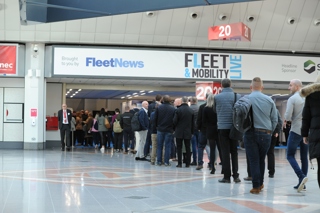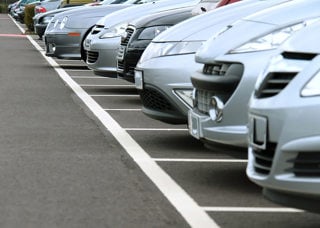Unexpected bills tempt drivers back
The financial climate, combined with an increased choice list, is encouraging cash allowances drivers at Xerox to opt back into the company car scheme.
Val South, fleet manager at Xerox, says drivers are returning to both contract hire and the company’s ECO scheme.
Employees’ choices of car and how many business miles they do determine which scheme they enter.
Currently 850 employees take cash but so far this year 30 have come back into the car scheme. Last year 20 opted back in.
“Drivers are tightening their purse strings,” South says. “If they are in the car scheme they know what the car will cost them for the next four years whereas if they use their own car they may face unexpected bills.
“I’ve had two people contact me this week asking to return to the car scheme. One had had their car stolen and the other no longer wanted to deal with maintenance issues.
"They wanted to be back in the scheme because it’s simple – if something goes wrong they just have to make a phone call.”
Xerox has also increased its choice list after asking cash takers why they didn’t choose a car from the company scheme.
“We used to have five manufacturers but we introduced a car ownership scheme in 2008 and we have gradually increased the number of manufacturers to 30,” South says.
She adds that the company sees the drift back to the car scheme as “a good thing” from a duty of care perspective.
“When cash takers claim business mileage they confirm that the car has a valid MOT and is insured for business purposes, but it is an area of worry for us,” South admits.
The company plans to review cash allowances every four years to ensure they are in line with the market place.
South is also looking at upping communication. “The ECO scheme is quite complex and people may not understand it so they go with the cash option,” she says.
“We did a number of roadshows at the time we launched the scheme but that was a few years ago. We need to re-educate people about the benefits of the scheme.”
Cash takers behind growth in UK grey fleet
Cash allowance drivers who do business mileage fall into the ‘grey fleet’ category – drivers using private vehicles for business journeys.
Organisations owe the same duty of care to grey fleet drivers as they do to company car drivers and need to ensure that the vehicle has a valid MOT, is insured for business use and that the employee has a valid driving licence.
The grey fleet is generally thought to be older vehicles that are potentially less well-maintained than company cars, which is a concern for companies.
HMRC puts the number of private cars used for business at up to four million, but precisely how many are cash takers is unclear.
“It’s almost impossible to work out,” says Rawlings. “It gets lost in the way people are recruited and rewarded.”
However, it is common for companies to offer both cash allowances and company cars.
Mackney says that 75-80% of the companies that Arval’s consultancy team work with offer both.
However, very few offer cash to job-need drivers for duty of care reasons and company image, as they prefer customers to see their staff in new cars.
Rose adds: “Monks Guide 2010 reported that 87% of employers surveyed offered a cash alternative to at least some of their population – although take-up rates have tended to be significantly lower.”
There is also a lack of data around how many business miles grey fleet drivers do – another area of concern. Often this is because the information resides with finance and not fleet.
Drivers are reimbursed for business mileages at AMAP rates – some even pay above the Government’s recommended 45p per mile – so mileage costs an organisation more than for drivers travelling in company cars who are reimbursed at lower Advisory Fuel Rates.
Eight ways to encourage drivers back into the company fleet
1 Carry out a staff survey
Finding out why cash allowance drivers are opting out of the company car scheme is a good starting point. You might discover that the choice list is too restrictive or that they don’t understand taxation issues and find cash allowances an easier option.
You could also canvass interest in alternative company car schemes such as salary sacrifice. See Fleet News, May 12-25, for a guide to introducing salary sacrifice.
2 Work with stakeholders
The fleet manager is not usually involved in calculating cash allowances – it falls to the HR or finance department and they will need to be involved in any decisions about cash allowances.
“You should include other stakeholders – drivers, members of HR and finance, the MD and your leasing provider – to ensure the project is steered in the right way,” advises Hollick.
3 Widen choice of vehicles
“Companies want to reduce cost so they look at a sole manufacturer arrangement, but often the car scheme becomes far less attractive,” Mackney says.
“You need to have a good selection of vehicles.” Global IT firm CSC reviewed its car scheme with Lex Autolease and found that by focusing on low emission premium badge models, employees opted back into company cars in significant numbers.
4 Set realistic CO2 emissions caps
“Companies are shooting themselves in the foot by setting the CO2 limit of company cars really low,” Mackney says.
“Staff migrate to cash allowances because they can get the car they want. Companies should set realistic caps and look to reduce them year on year, taking into account technology developments from manufacturers.”
5 Review the amount paid to cash takers
Leasing providers now have software that can model the cost of the company car and the cost of the cash allowance to assess potential savings.
If the company is over paying cash allowances, ring fence those employees and introduce lower cash allowances for new employees.
Also review mileage reimbursement rates. “If cash takers are doing lots of business miles you are probably setting the rate too high,” says Mackney.
6 Restrict mileages
At Chivas Brothers, drivers who do 10,000 business miles are not given the choice of cash and have to take a company car.
“Many firms stipulate that if a driver does more than 10,000 business miles they have to take the car. You could bring that down to 5,000 miles or less,” suggests Fisk.
7 Remind drivers of the benefits
Redman believes that publicity around IBM’s changes to the company car scheme last year, together with the launch of the self-funded salary sacrifice scheme, raised awareness about the benefits of taking a company car.
Firms should highlight benefits such as corporate purchasing power and vehicle maintenance and disposal being taken care of as reasons to opt back into the car scheme.
8 Help drivers to choose
“Companies may give drivers the choice of salary sacrifice, a company car or taking the cash but often they don’t give them enough help in making the right decision,” says Rawlings.
“You have to be careful offering financial advice but you could work with your leasing provider to offer support to drivers.”




















Login to comment
Comments
No comments have been made yet.